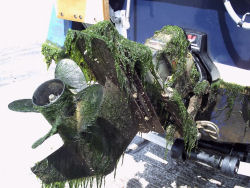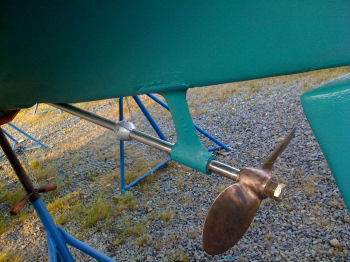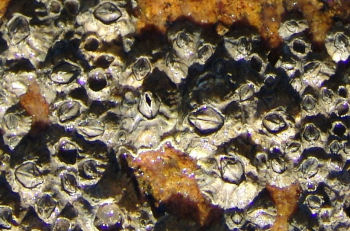How To Keep Growth Off Underwater Metal
Painting your boat’s bottom is a straightforward job: You, or your boatyard, apply new paint over old. But what about the running gear – struts, shafts, trim tabs, propellers? Bare metal, especially if you don’t use your boat often, will soon sport a luxurious coat of underwater flora, and maybe even barnacles by season’s end. Excessive growth creates unnecessary drag, impairs efficiency and costs money to scrape off at haul-out.


It’s easy to keep your running gear grass- and barnacle-free. All that it takes in the intention, some attention, the right coatings and some TLC. Here’s how.
Mike Smith Reports--
Every major paint company sells carefully engineered coating systems for underwater metal. Only thing is, they involve several steps and take more time and/or money, especially if you’re paying the yard. My favorite paints are Interlux and Pettit, but more important than the brand is the application: Read and follow the directions and don’t cut corners. Don’t mix products from different companies. Procedures and products differ for different metals, too. Both companies provide detailed instructions for steel, bronze, stainless, aluminum and even lead (for sailboat ballast keels) on their websites or in printed material available from dealers.
 With a little elbow grease, okay, we lied, with a lot of elbow grease (helps is you use Royal Purple) you can get your shaft and prop looking like new. Now it is time to apply an anti-fouling coating.
With a little elbow grease, okay, we lied, with a lot of elbow grease (helps is you use Royal Purple) you can get your shaft and prop looking like new. Now it is time to apply an anti-fouling coating.
First, the Hard Part
Whichever system you’re using, here are the basics. First, scrape old paint, barnacles, grass residue, etc., off the metal, then degrease the surface with the appropriate thinner for the paint system you’ve chosen. Clean the metal by sandblasting it (a job for the yard), scrubbing it with coarse emery cloth or wire-brushing it (use a bronze, not a steel, brush) until the surface is bright. Brush off any residue, or blow it off with compressed air. Don’t use more thinner.
Apply a thin coat of primer to the now-shiny metal and let it dry for the specified time, usually anywhere from one to eight hours depending on product and temperature. (Leave the surface under the zincs bare.) Then apply multiple coats of high-build primer to protect against corrosion; the primer creates a waterproof seal. How many coats depends on the system you’re using and the metal you’re painting, but in general you’ll need three or four. If you want an extra-smooth surface, apply fairing compound after the first coat. Follow the directions for recoating times; there’s a minimum and maximum time between coats. Exceed the maximum and you’ll have to sand before recoating.
 Stern drives in many parts of the world will look foul fast. After proper cleaning, match the color of the drive unit the best you can and follow the anti-fouling coating manufacturer’s instruction carefully – they aren’t kidding.
Stern drives in many parts of the world will look foul fast. After proper cleaning, match the color of the drive unit the best you can and follow the anti-fouling coating manufacturer’s instruction carefully – they aren’t kidding.
What Coating to Use?
As soon as the final coat of high-build primer is dry, follow up with the first coat of antifouling. Check the surface with your thumb: If it feels tacky and you can leave a print without getting any paint on your thumb, it’s ready. Interlux recommends two or three coats of a hard antifouling, like Fiberglass Bottomkote or Ultra for bronze and steel, one of the Trilux paints for aluminum. Pettit says apply two or three coats of Vivid to any metal.
 Welcome to the underwater world of your boat’s bottom. These life forms are nasty.
Welcome to the underwater world of your boat’s bottom. These life forms are nasty.
Yeah, it’s a pain to do this, but so is scrubbing algae off your trim tabs every week, or chipping barnacles off the strut at the end of the year. Do it right, and with luck next spring you can simply recoat your running gear with fresh antifouling.
Interlux, (800) 468-7589, www.yachtpaint.com
Pettit, (800) 221-4466, www.pettitpaint.com